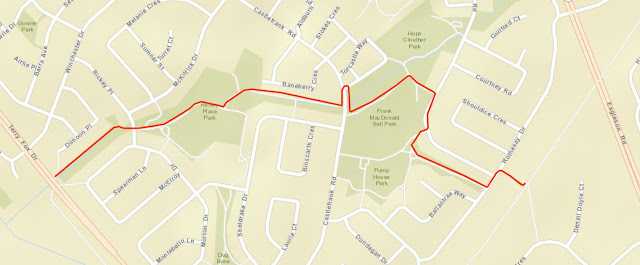Bridlewood Hydro Lines Pathways Update
I have been reporting for a number of years on the deterioration of the pathways through Bridlewood, particularly the pathway along the smaller hydro line through Bridlewood, the latest being this spring’s report.
I finally have some positive news to report. Earlier this fall we noticed work being done on the paved portion of the pathway along the large hydro line through Bridlewood and were pleasantly surprised to find it completely rebuilt within a month. However, the gravel stone dust portion of the pathway remains the same.
Route
of the Rebuilt Pathway
The following video follows the paved portion in both directions in order to highlight the fall colours along the pathways.
We also were happy to notice that work has begun rebuilding the pathway along the smaller hydro line through Bridlewood and are hopeful they will rebuild the full length of the pathway which is very deteriorated. The following shows were construction has begun along the pathway. We will report further when construction is completed.
Small Hydro Line Pathway Construction Progress
UPDATE 2024-11-03
Portion of pathway indicated as under construction is now newly paved. No sign of work continuing on rest of pathway.
I can also confirm that the redone sections are considerably wider than the original pathways.







